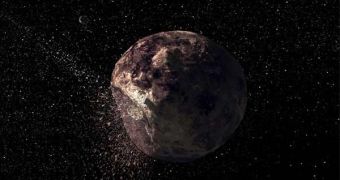Since the International Astronomical Union (IAU) started changing the definitions of what planets, asteroids, and dwarf planets looked like, the faith of many large, cosmic objects in the solar system has remained undecided. One such example is the giant rock 2 Pallas, which is, in fact, a protoplanet – a Moon-sized body that, given the appropriate conditions when the Sun first formed, may have accreted enough mass to turn into a planet.
Scientists report that the celestial body, which has a diameter of about 165 miles (265 kilometers), is among the largest ones in the inner asteroid belt, which can be found between the orbits of Mars and Jupiter. “When you think asteroid, you think a small rubble pile, and this isn't that. These objects are transitions between planets and asteroids. They're almost like mini planets,” University of California in Los Angeles (UCLA) planetary physics graduate student Britney Schmidt explains. She is also the leader of a new study, detailing the properties of bodies similar to 2 Pallas.
If they had been “born” elsewhere in the solar system, experts believe, some of the bodies in the asteroid belt might have grown to be small planets. Examples of this type of structures include 2 Pallas, Ceres and Vesta. The last two are classified as a dwarf planet and an asteroid, respectively. “Because of where they are in the solar system, in that region the gravity is such that those asteroids could never quite conglomerate into a larger planet,” Schmidt explains. “They were certainly like the building blocks of the larger planets. They allow us to almost take a photograph of how planet formation was happening in the early stages of the solar system,” she tells Space.
Recent investigations of 2 Pallas have also revealed that the formation has maintained its rough, initial shape since its birth, billions of years ago. Astrophysicists hypothesize that, if the rock had been allowed to grow a bit larger, then it would undoubtedly have developed a stronger gravitational pull, and its size would have increased proportionally. Additionally, it may be that liquid water once existed on its surface, the experts say, although more studies are needed to confirm that.

 14 DAY TRIAL //
14 DAY TRIAL //